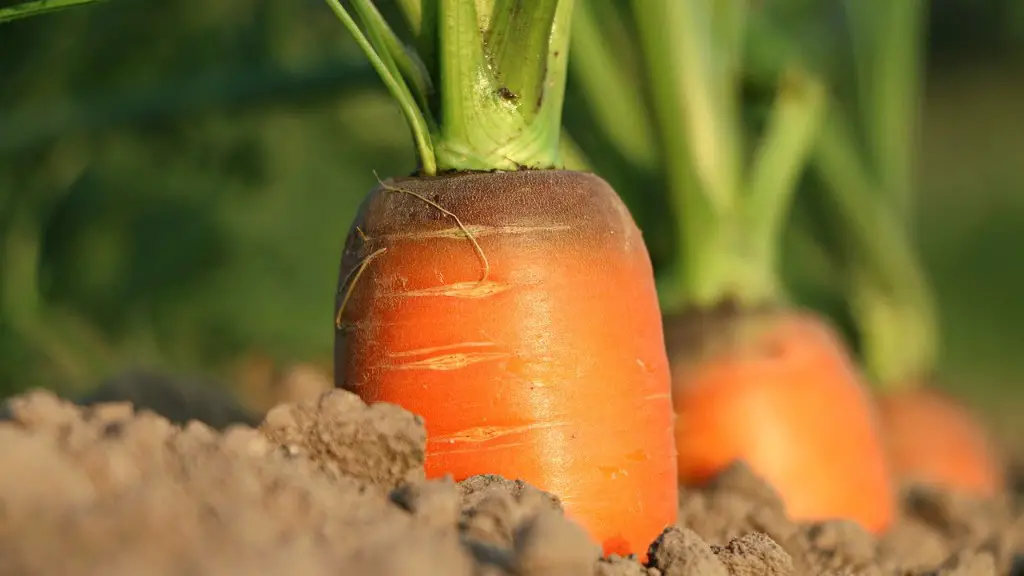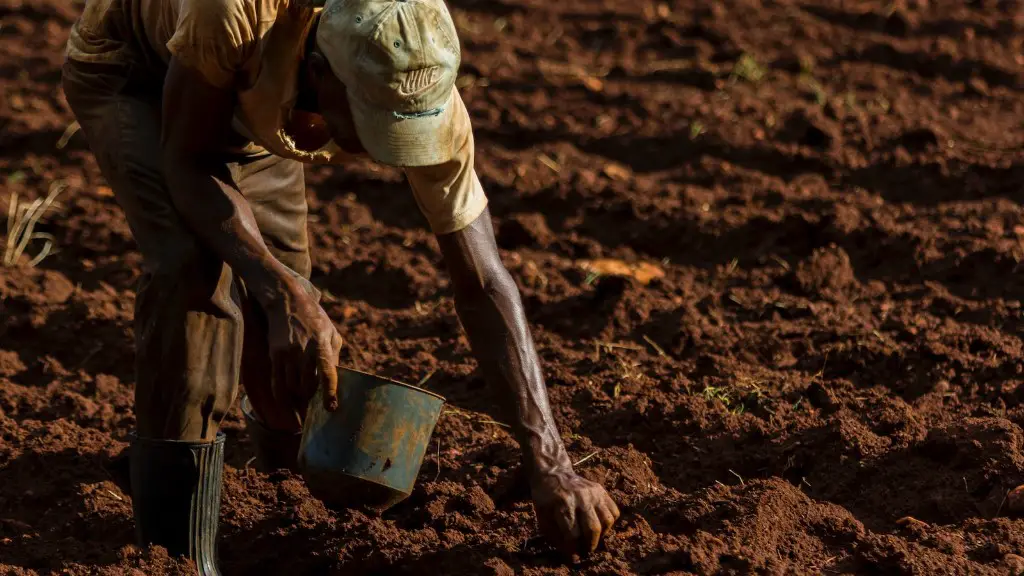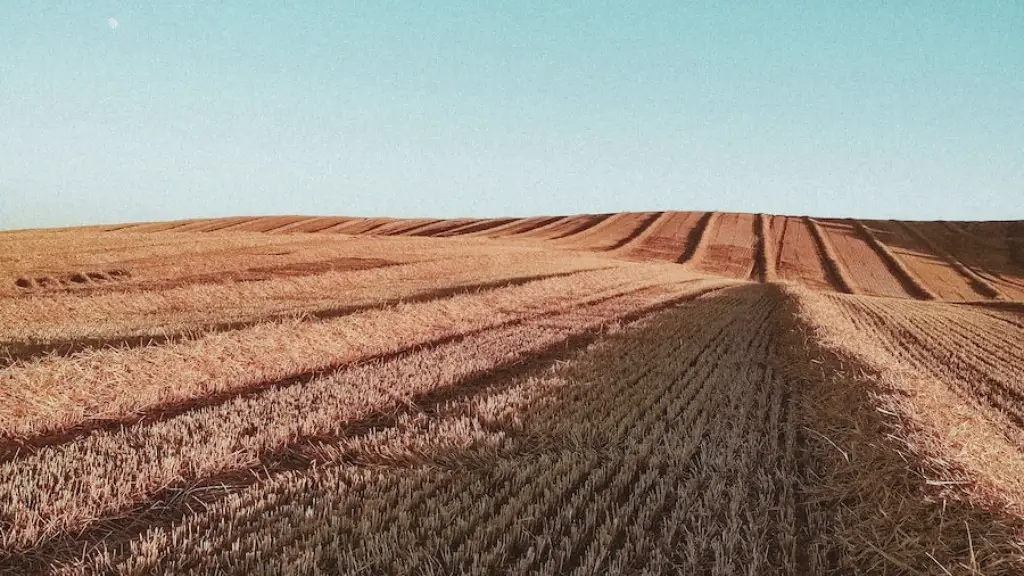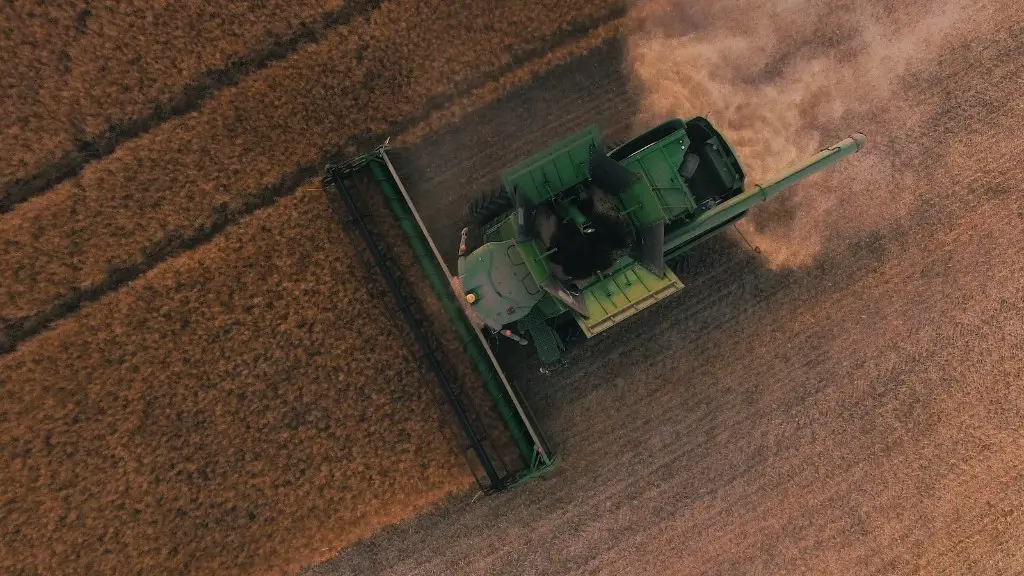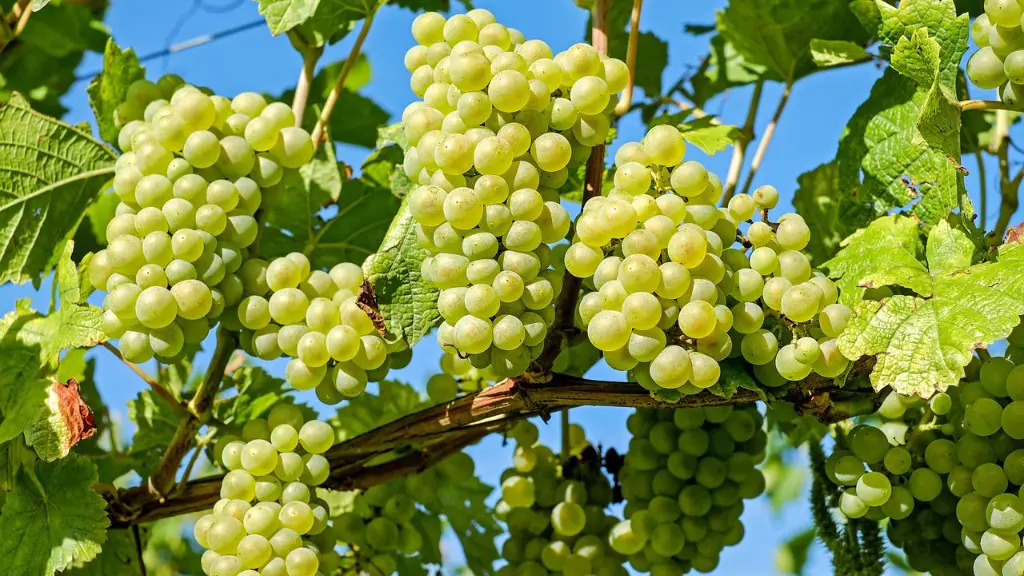Subsistence agriculture is an agricultural production system in which farmers grow crops and raise livestock primarily for their own needs, rather than for sale. It is typically employed in cultures with little or no surplus production.
Subsistence agriculture is an agricultural production system in which farmers grow crops and raise livestock primarily to feed themselves and their families, rather than to sell them in the market. In subsistence agriculture, farmers typically live off the land they work and do not often have much surplus to sell.
What are examples of subsistence agriculture?
Subsistence farming is a type of agriculture where farmers grow crops and raise livestock for their own needs, rather than for sale. This is often done in areas with poor soil and limited resources, where farmers cannot compete with larger commercial operations. Subsistence farming is often the only option for people in these areas, as they cannot afford to purchase food from elsewhere. While it is often seen as a primitive way of life, subsistence farming can be very rewarding, as it allows people to be self-sufficient and to live close to the land.
Subsistence agriculture is a way of life for many people around the world. It is a way of growing food mainly for the family, and anything leftover goes to the local community, rather than to a big market. This type of agriculture is often necessary in areas where the climate is not conducive to large-scale commercial farming. It is also a way of life that helps to preserve traditional cultures.
What are the 3 major types of subsistence agriculture
1. Subsistence Agricultural Regions: Shifting cultivation: This type of subsistence agricultural region is characterized by the practice of shifting cultivation, or slash-and-burn agriculture. This involves clearing a piece of land by cutting down the vegetation and then burning it, and then planting crops in the cleared area. Once the crops are harvested, the land is allowed to return to its natural state and the process is repeated. This type of agriculture is often found in tropical regions where the climate is conducive to growing crops year-round.
2. Pastoral nomadism: This type of subsistence agricultural region is characterized by the practice of pastoral nomadism, or the raising of livestock for food. This type of agriculture is often found in arid or semi-arid regions where the climate is not conducive to growing crops. Pastoral nomads often move their herds from one grazing area to another in order to find adequate food and water for their animals.
3. Intensive subsistence: wet rice dominant: This type of subsistence agricultural region is characterized by the practice of intensive subsistence agriculture, or the growing of crops for food. This type of agriculture is often found in regions where the climate is conducive to growing crops year-round. The most common type of
Subsistence farming is a type of agriculture where farmers grow crops and raise livestock primarily for their own needs, rather than for sale. This type of farming is still practiced in many parts of the world, particularly in areas of Sub-Saharan Africa, Southeast Asia, and parts of South and Central America.
Subsistence farming is often considered to be a more primitive form of agriculture, as it was the predominant type of farming practiced by early civilizations. Most early farmers had to engage in subsistence farming simply to survive. However, even in modern times, subsistence farming can be a viable option for those who are willing to put in the hard work.
What are the 4 types of subsistence agriculture?
The four modes of subsistence are foraging, pastoralism, horticulture, and agriculture. Each mode of subsistence has its own set of characteristics that dictate how people live and interact with their environment. Foraging is the most basic form of subsistence, where people subsist off of the land by gathering plants and hunting animals. Pastoralism is a form of subsistence that is based on the domestication of animals, where people live in close proximity to their animals and use them for food, transportation, and other needs. Horticulture is a type of subsistence that is based on the cultivation of plants, where people grow crops and use them for food and other needs. Agriculture is the most complex form of subsistence, where people use irrigation and other techniques to cultivate crops and raise livestock.
A small farm that is run by a family is subsistence agriculture. This is because the majority or all of the crops that are produced are for the family to consume. This type of agriculture is different from commercial agriculture, which is geared towards producing crops for sale and profit.
What is subsistence agriculture quizlet?
Subsistence agriculture is a type of agriculture that is designed primarily to provide food for the farmer and the farmer’s family. The main goal of subsistence agriculture is to produce enough food to survive, rather than to generate income. This type of agriculture is typically found in developing countries, where many people live in rural areas and do not have access to modern technology or inputs.
In an economy which is not based on money, barter is the primary method of trade. This type of economy is typically found in subsistence farming societies, where people grow just enough food to feed themselves and their families. There is little or no surplus, and thus no need for money.
What is the difference between commercial agriculture and subsistence agriculture
Subsistence farming is a type of agriculture where farmers cultivate crops for personal consumption rather than for profit. The main difference between subsistence farming and other types of agriculture is that farmers do not sell their crops; instead, they use them to feed themselves and their families.
The monsoon is a major factor in subsistence farming. When the monsoon arrives, farmers plant their crops and then rely on the rains to water them. If the rains are insufficient, the crops may fail and the farmers will go hungry.
Animals and human labour play a larger role in subsistence farming than in traditional methods. Farmers often use draught animals to plough their fields and oxen to carry water. They also use their own labour to weed the crops and harvest them by hand.
The five broad categories of subsistence patterns are foraging, horticulture, pastoralism, agriculture, and industrial food production.
Foraging is the simplest form of subsistence, and it involves hunting and gathering food from the natural environment. Horticulture is a more complex form of subsistence that includes the production of crops, typically using simple tools and methods. Pastoralism is a form of subsistence that involves the raising of livestock, while agriculture is the most complex form of subsistence, and it involves the cultivation of crops using sophisticated tools and techniques. Industrial food production is the most modern form of subsistence, and it involves the use of machinery and technology to produce food on a large scale.
What kind of crops are grown in subsistence farming?
It is amazing how many different plants were domesticated by subsistence farmers in the Americas. Corn, beans, squash, and potatoes were some of the more notable examples. Crop rotations were used in order to take advantage of seasonal climates and to also minimize the amount of stress placed on the soil. This was a very effective way of farming that allowed for a great diversity of crops to be grown.
Subsistence agriculture is a type of agriculture that is mostly self-sufficient, meaning that farmers produce enough food to live on and have very little left over to sell. This type of agriculture generally requires small capital or finance, mixed cropping, limited use of agrochemicals, and unimproved varieties of crops and animals. farmers usually use traditional tools like hoes, machetes, and cutlasses, and there is little to no surplus yield.
Why is subsistence agriculture
In intensive subsistence farming, the main goal is to produce enough food to meet the needs of the farmer and their family. This type of farming is typically found in areas with high population densities and limited farmland. farmers must use every available bit of land to get the most out of it. This often includes growing crops on steep hill slopes or in small clearings in the forest.Farmers may also use irrigation and other techniques to increase yields.
Subsistence farming is a type of agriculture where farmers grow crops and raise livestock in order to live and feed their families. Subsistence farming can be further classified as intensive subsistence and primitive subsistence farming. Intensive subsistence agriculture is where the farmer cultivates a small plot of land using simple tools and more labor. This method is often used in areas where the land is not very fertile and the farmer cannot afford to purchase expensive inputs. Primitive subsistence agriculture is the simplest form of subsistence farming and is often used in areas with very little farmland. Farmers in this type of subsistence farming often use simple tools and techniques and do not use any type of fertilizer or crop rotation.
What are the characteristics of subsistence agriculture?
Subsistence agriculture is a type of agriculture in which farmers grow crops and raise livestock primarily to feed themselves and their families. Commercial agriculture, on the other hand, is an type of agriculture in which farmers grow crops and raise livestock primarily for sale.
There are several key differences between subsistence and commercial agriculture. Subsistence agriculture is typically practiced on a smaller scale, with farmers using family labor and traditional methods of management. The goal of subsistence agriculture is simply to produce enough food to feed the farmer and his or her family, with little or no excess. In contrast, commercial agriculture is typically much larger in scale, with farmers employing hired labor and using modern methods of management. The goal of commercial agriculture is to produce crops and livestock for sale, rather than for the farmer’s own consumption.
Another key difference between subsistence and commercial agriculture is the cost of production. Subsistence agriculture is typically much less expensive than commercial agriculture, since farmers are growing crops primarily for their own consumption and are not incurring the costs of marketing and selling their products.
Primitive subsistence farming is a type of farming in which farmers grow crops and rear animals for their own consumption, rather than for sale. The main characteristics of this type of farming are manual labor, small scale production, and a reliance on natural resources.
Warp Up
Subsistence agriculture is a type of agriculture where farmers grow crops and raise livestock for their own needs, rather than for sale.
Subsistence agriculture is a type of agriculture where farmers grow crops and raise livestock primarily for personal use, rather than for sale. This is often done in areas with little arable land and where commercial farming is not possible. subsistence farmers may also sell some of their surplus products in order to purchase other necessary items, but their main goal is to provide for their own needs.
